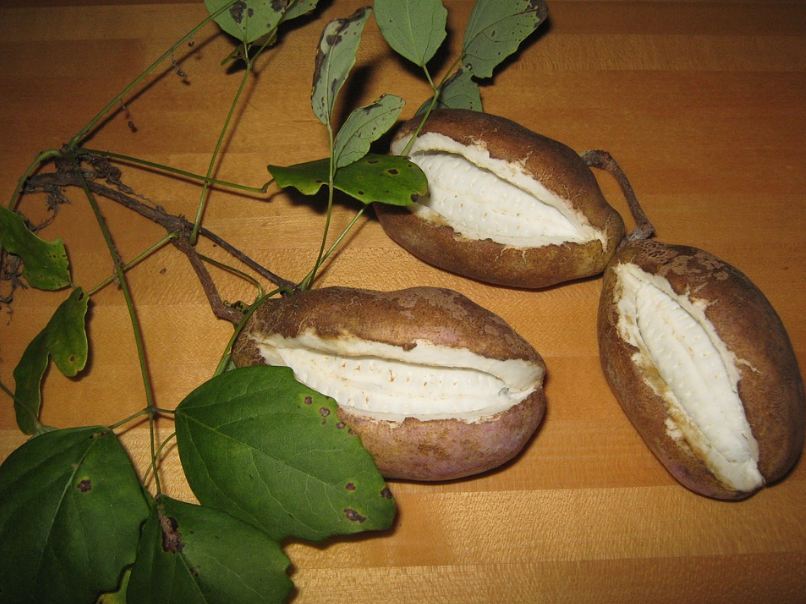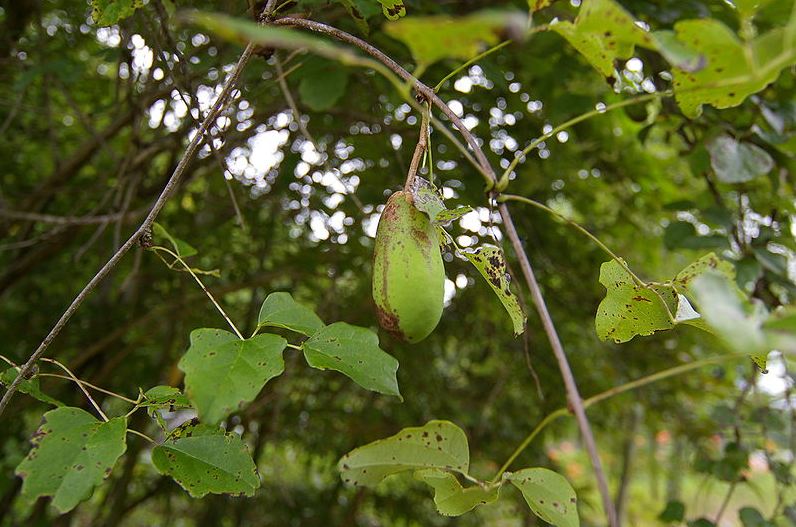Japan is home to vital climbing plants. Fruits, especially melons, are given as gifts, and some fruits in this country are even cultivated as luxury items. But among the different fruit-bearing climbing plants in Japan, one of the most unusual is the Akebi fruit or also known as Akebi vine or Akebia quinata. It is a plant that bears strange fruit in autumn. It is a semi-evergreen plant that has pretty, palmate leaves with fivelong-stalked leaflets. During spring, it produces clusters of small flowers.
Akebi is a mysterious and beautiful fruit that is native to the north of Japan. It has only been cultivated and available in stores in recent decades. It has a translucent white flesh inside that is filled with countless white-capped shiny black seeds, and it is eaten as a fruit. But unknown to many, it can also be cooked and eaten like a vegetable. If you want to learn more, read on as we are going to give you more details about the Akebi fruit.
The Mysterious Akebi Fruit
Traditionally, many Japanese pictures the Akebi fruit as a wild fruit that scruffy country kids pluck and eat from vines in Tohoku while they play in the mountains. But as people became more interested in finding new and interesting culinary ingredients, a variety of Akebi that could be cultivated was developed. It was only about 20 years ago when cultivation began, and it was centered mainly in Yamagata Prefecture in the Tohoku region of Japan.
In that region, traditional Akebi cuisine exists, and it was mixed with salt to pickle cucumber. It is said to increase the sweetness because the fruit does not taste sweet. The pod is also stuffed, sauteed, and deep-fried.
In Akita Prefecture, oil was produced from the seeds of the Akebi fruit. But this is very rare and was used asherbal medicine. Also, recent scientific research has shown that the Akebi has antiseptic properties and is diuretic.
In Yamagata Prefecture, people traditionally believed that the spirits of ancestors returned to this world for Obon, an annual Buddhist event, on a ship made of the Akebi pod and offered Akebi on the Buddhist family altar.
The Akebi fruit makes a short appearance for just two weeks or so in early autumn. It can be found in an upscale grocery store and specialty fruit boutiques. Many Japanese still have never tasted this local exotic fruit.
Akebi Fruit Description and Taste
The Akebi fruit has a cylindrical to oblong shape, and it hangs delicately from trailing vines. There are different varieties of Akebi fruit, varying in size and appearance. Its skin is generally thick, spongy, and semi-firm. Depending on the variety, it may ripen from green to violet, grey, or purple-grey when mature.
Two varieties of the Akebi fruit are wild and cultivated. Note that the wild Akebi will burst open naturally when it ripens, while the cultivated one will not. The Akebi fruit has a soft and crunchy consistency with a mild, sweet, and subtly bitter flavor. When you eat it, the flesh will melt into a semi-sweet liquid with notes of coconut, pear, and melon. Its seeds give a mildly bitter taste and added texture.
Nutritional Value of the Akebi Fruit
The Akebi fruit is a good source of vitamin C, which is an antioxidant that protects the body against environmental aggressors. It also contains a combination of zinc and vitamin B6, which can help strengthen the immune system. It can also provide potassium, calcium, and anti-inflammatory properties. In fact, in traditional Chinese medicine, the stems and fruits of the Akebi are used as a diuretic and are believed to aid in reducing dampness within the body.
How to Serve the Akebi Fruit
The Akebi fruit is best suited for both raw and cooked applications. You can fry, sauté, or grill it. You can also eat it raw by scooping its flesh using a spoon. You can also slice it open and slurp the flesh directly from the pod.
Many Japanese find the flesh of the Akebi fruit bland. That’s why they add lemon juice to it to balance the sweetness and add complexity to its flavor. In addition, the fruit can also be added into drinks or smoothies, pickled in plum juice, or cooked into jellies and jams. The seeds of the Akebi fruit can either be swallowed or removed, depending on your personal preferences.
In the regions of Tohoku, Japan, the pod of the fruit is considered the most important part. It is usually stuffed, stir-fried, and deep-fried. They can also be fried into tempura, like other vegetables. You can also steam the pods to make them softer, then stuff them with ground meat, miso, and vegetables. The pods can also be mixed with salt and pickled cucumber to decrease its bitterness before cooking.
The Akebi fruit can be paired with sesame oil, miso paste, cooking sake, Japanese soy sauce, noodles, rice, onion, garlic, and spinach. However, keep in mind that the fresh fruit is highly perishable and should be consumed immediately once ripe to get the best flavor.
Conclusion
It’s amazing to know that a mysterious fruit exists and is only available for a very limited time in Japan. Today, the Akebi fruit variety you can find in the market is the cultivated variety. It has become a specialty item sold to tourists, fruit enthusiasts, and as luxury gifts for family and friends in Japan. We hope the information in this article helped you in learning more about the Akebi fruit.


